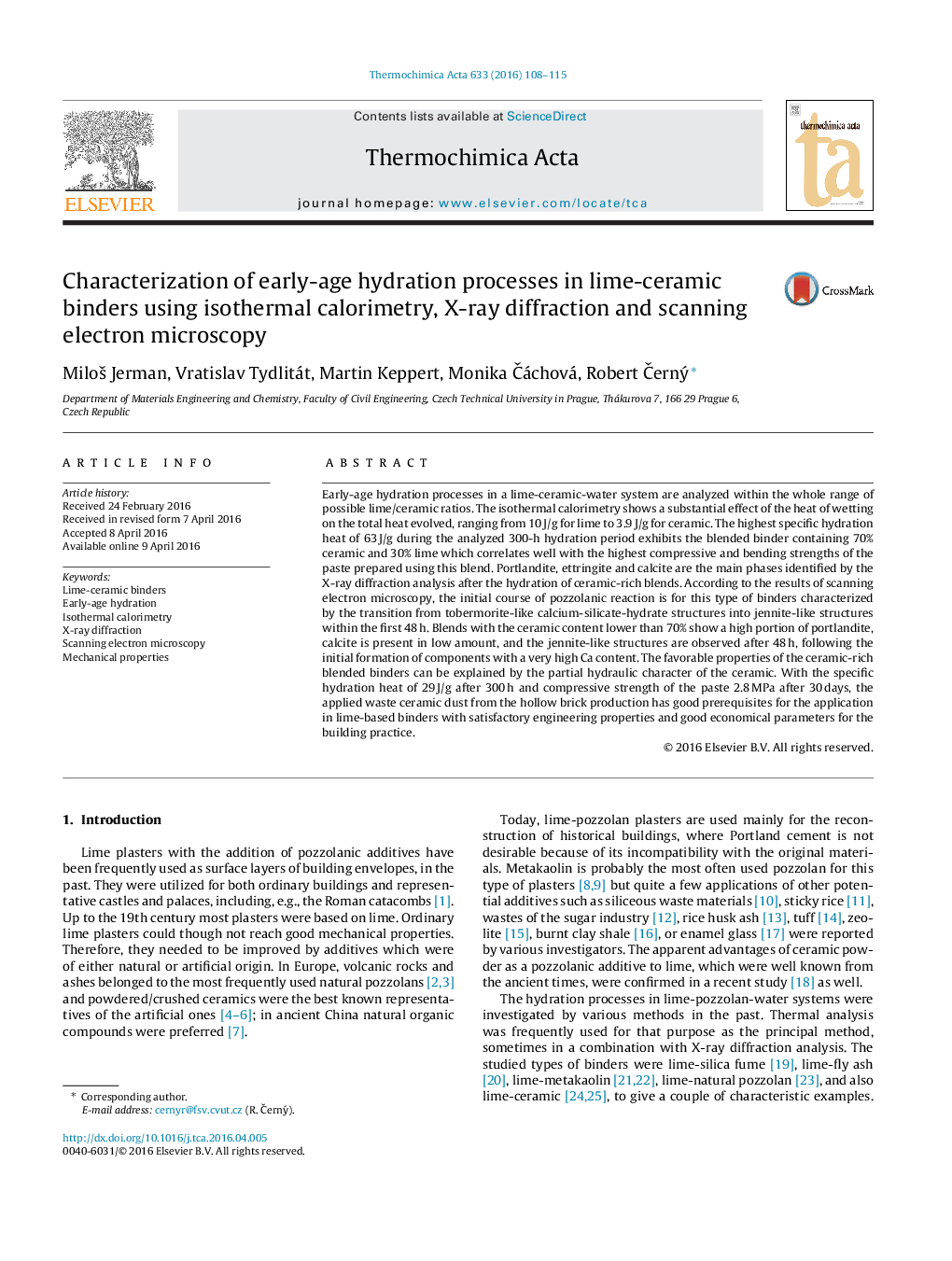| Article ID | Journal | Published Year | Pages | File Type |
|---|---|---|---|---|
| 672730 | Thermochimica Acta | 2016 | 8 Pages |
Abstract
Early-age hydration processes in a lime-ceramic-water system are analyzed within the whole range of possible lime/ceramic ratios. The isothermal calorimetry shows a substantial effect of the heat of wetting on the total heat evolved, ranging from 10Â J/g for lime to 3.9Â J/g for ceramic. The highest specific hydration heat of 63Â J/g during the analyzed 300-h hydration period exhibits the blended binder containing 70% ceramic and 30% lime which correlates well with the highest compressive and bending strengths of the paste prepared using this blend. Portlandite, ettringite and calcite are the main phases identified by the X-ray diffraction analysis after the hydration of ceramic-rich blends. According to the results of scanning electron microscopy, the initial course of pozzolanic reaction is for this type of binders characterized by the transition from tobermorite-like calcium-silicate-hydrate structures into jennite-like structures within the first 48Â h. Blends with the ceramic content lower than 70% show a high portion of portlandite, calcite is present in low amount, and the jennite-like structures are observed after 48Â h, following the initial formation of components with a very high Ca content. The favorable properties of the ceramic-rich blended binders can be explained by the partial hydraulic character of the ceramic. With the specific hydration heat of 29Â J/g after 300Â h and compressive strength of the paste 2.8Â MPa after 30Â days, the applied waste ceramic dust from the hollow brick production has good prerequisites for the application in lime-based binders with satisfactory engineering properties and good economical parameters for the building practice.
Related Topics
Physical Sciences and Engineering
Chemical Engineering
Fluid Flow and Transfer Processes
Authors
MiloÅ¡ Jerman, Vratislav Tydlitát, Martin Keppert, Monika Äáchová, Robert Äerný,
